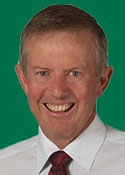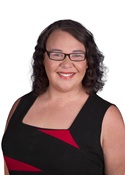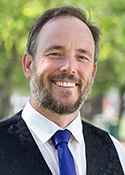Parkes
Margin: Nationals 20.0%
Region: Interior, New South Wales
In a nutshell: The deep interior of New South Wales has become increasingly safe territory for the Nationals over the decades with the decline of the Labor stronghold of Broken Hill.
Candidates in ballot paper order

|
KATE STEWART GLEN RYAN PHILIP JOHN AYTON MATT PARMETER MARK COULTON |
The western New South Wales seat of Parkes is an all but unassailable stronghold for the Nationals, which is currently held on a margin of 18.9% by Mark Coulton. As redrawn by the latest redistribution, it takes in almost exactly half the surface area of New South Wales, encompassing most of the Queensland and South Australian borders. Its two main population centres are Dubbo in the south-east and the declining Labor redoubt of Broken Hill in the far west. The redistribution adds Broken Hill and the remote areas of the state’s north-west from Farrer, accounting for around 14,600 voters, along with nearly 9000 voters around Gunnedah from New England. These gains are balanced by the loss of 20,000 voters around Mudgee and Wellington to Calare. Labor’s strength in Broken Hill is the main contributor to a drop in the Nationals margin from 22.3% to 20.4%.
Parkes was created with the enlargement of parliament in 1984, at that time being centred on Dubbo and Bourke. Regional population decline has since necessitated its expansion, most notably in 1993 when it took Broken Hill and the deep interior from abolished Riverina-Darling, and in 2007 when its eastern neighbour Gwydir was abolished. The latter redistribution left Parkes looking more like the old Gwydir than its own former self, having supplemented Dubbo with entirely new territory through Narrabri, Walgett and Moree to the Queensland border, while transferring Bourke and Broken Hill to Calare and Farrer respectively. Parkes has since extended back to the western interior in two stages, gaining Bourke from a heavily redrawn Calare in 2010, and now the state’s north-western corner from Farrer.
The area now encompassed by Parkes is largely contiguous with the electorates of Gwydir and Darling as they existed between 1922 and 1977. Gwydir was held by the National/Country Party without interruption from 1949, but Darling was a Labor seat by virtue of being dominated by Broken Hill, the decline of which over recent decades has eliminated Labor as a force in western New South Wales. Riverina became highly marginal when it absorbed Broken Hill upon the abolition of Darling at the 1977 election, and it was held by Labor for a term before going to the Nationals in 1980. Labor also came close to winning Parkes when it took over Broken Hill in 1993, but its position steadily deteriorated from there. The Liberals polled only 9.9% when they last fielded a candidate upon the retirement of Michael Cobb in 1998, and they did not repeat the exercise when Cobb’s successor Tony Lawler bowed out after one term in 2001, or when Lawler’s successor John Cobb moved to Calare in 2007.
The member since 2007 has been Mark Coulton, a former Gwydir Shire mayor who spent his first term in parliament as a shadow parliamentary secretary, but has since had to settle for the position of Nationals whip.
Analysis by William Bowe. Read William’s blog, The Poll Bludger.


